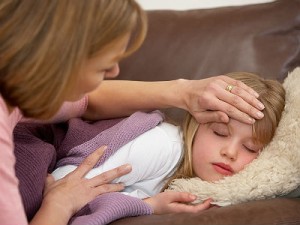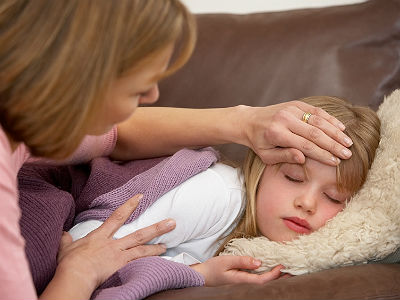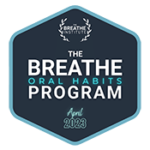When Things Get Hot:
Thermometers and Taking Your Child’s Temperature
A parent’s aid in Thermometer types and information. Inevitably, your child will face the heat of a fever at some point, and it is usually sooner rather than later! From teething to infections, fevers are the body’s natural response to fighting off offenders and telling us that the immune system is hard at work! In fact, fevers are a good thing as long as they are within a reasonable range; not all fevers need to be treated!

Identifying a Fever
Normal body temperature for adults and children alike is 98.6^F with an acceptable range of 97.5^F – 99.5^F. When your child feels warm to the touch (with the backside of your hand) and flushed, you can guess that he may be experiencing a fever. Most Doctors consider a temperature of 100.4^F or higher to be a fever. For babies under 3 months, a fever of 100.4^F requires immediate attention since babies have a limited ability to fight illness. Children 3-6 months, a fever of 101^F or higher requires immediate attention, while children over 6 months, 103^F or higher. While it is important to look for the cause of a fever, taking your child’s temperature first can help you determine whether or not they need immediate treatment.
Types of Thermometers
Children keep no secrets when it comes to experiencing a fever. The first step in helping your child through this discomfort is to take their temperature. There are three types of thermometers that you can use.
Old-Fashioned Mercury Thermometers
The American Academy of Pediatrics (AAP) encourages parents to remove mercury thermometers from their homes to prevent accidental exposure and poisoning should the thermometer leak or break.
Digital Multi-use Thermometers
In your first aid cabinet, a basic digital thermometer is best kept handy and may be the most practical, reliable way to determine if your child has a fever. Digital stick thermometers usually take about 1 minute to get an accurate reading. They are also versatile since they can be used to take a rectal (in the bottom), oral (in the mouth) or axillary (under the arm) temperature. These thermometers should only be used in one area that you chose, in order to prevent contamination. Simply label the thermometer for its area of use. Digital stick thermometers should be used rectally for children under three years , and orally for children 4-5 years old. An axillary temperature is the least reliable option since it is external and should be used as a general guide.
Tympanic Thermometers
A tympanic (ear) thermometer reads the infrared heat waves released by the eardrum. This thermometer is recommended for babies 6 months and older. It is important to keep in mind that tympanic thermometers should not be used right after swimming, bathing, or if ear pain/infection is present. Too much earwax can also cause the reading to be inaccurate.
Temporal Thermometers
A temporal thermometer is usually what doctors use and is the quickest method of taking a temperature. These thermometers read the infrared heat waves released by the temporal artery which runs across the forehead just below the skin. This is used for babies 3 months and older and can also be used for newborns.
Taking Your Child’s Temperature
According to the American Academy of Pediatrics, temperatures taken rectally or orally are the most accurate. Temperatures can vary depending on the method used and you should talk to your child’s pediatrician regarding the best method for you. Every child is different so try what works best for you and your little one.
For taking a rectal temperature:
Clean the end of the thermometer with rubbing alcohol or soap and water. Rinse it with cool water. Do not rinse it with hot water.
- Put a small amount of lubricant, such as petroleum jelly, on the end.
- Place your child belly down across your lap or on a firm surface. Hold him by placing your palm against his lower back, just above his bottom. Or place your child face up and bend his legs to his chest. Rest your free hand against the back of the thighs.
- With the other hand, turn the thermometer on and insert it 1/2 inch to 1 inch into the rectum. Do not insert it too far. Hold the thermometer in place loosely with 2 fingers, keeping your hand cupped around your child’s bottom. Keep it there for about 1 minute, until you hear the “beep.” Then remove and check the digital reading.
For taking an oral temperature:
- Clean the thermometer with lukewarm soapy water or rubbing alcohol. Rinse with cool water.
- Turn the thermometer on and place the tip under your child’s tongue toward the back of his mouth. Hold in place for about 1 minute, until you hear the “beep.” Check the digital reading.
- For a correct reading, wait at least 15 minutes after your child has had a hot or cold drink before putting the thermometer in his mouth.
For taking an axillary temperature:
- Turn on the thermometer, and place the small end in your child’s armpit, under the clothing. The thermometer should be on the skin.
- Gently hold the arm down in place against their side until the thermometer beeps.
For taking a tympanic temperature:
- The thermometer needs to be inserted at the right angle in a child’s ear to provide an accurate reading. Don’t use it right after a child has been swimming or bathing or if ear pain is present.
- Place a clean cover on the cone-shaped end.
- Pull the ear backward slightly, and gently place the thermometer in the ear canal. Try to aim the probe toward the child’s eye on the opposite side of the head.
- Turn on the thermometer; remove after it beeps.
We hope this was a helpful guide to the different types of thermometers and the types that can be used according to your child’s age and tolerance. As parents, fevers can be just as alarming for us as they are uncomfortable for our children. Taking your little one’s temperature can be a difficult task at times, but acquiring an accurate temperature can help you determine whether or not your child requires immediate attention or to simply allow it to run it’s course.










